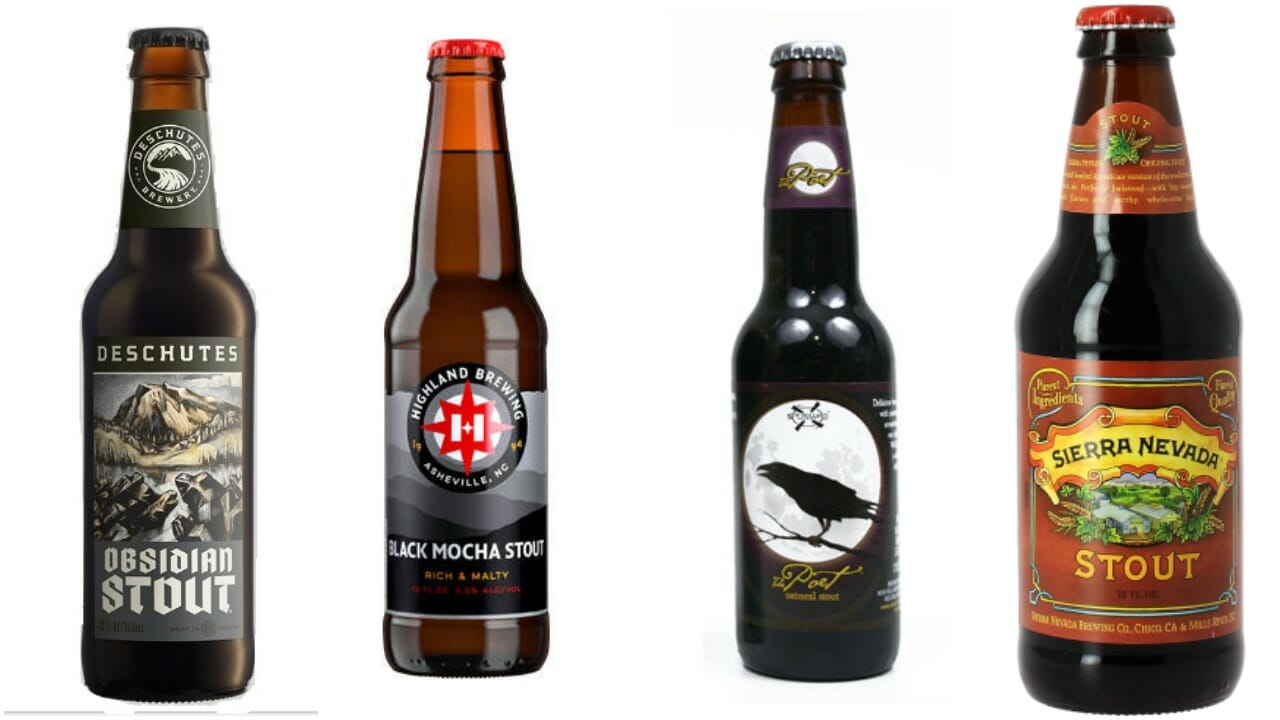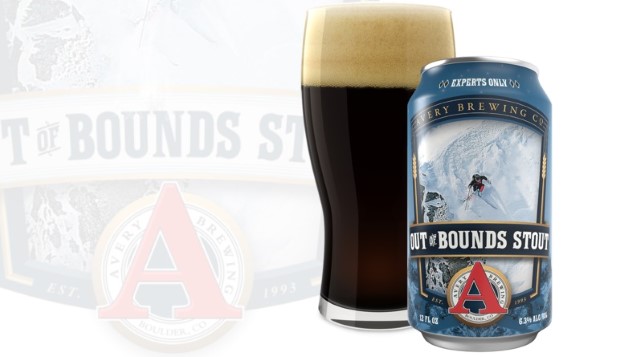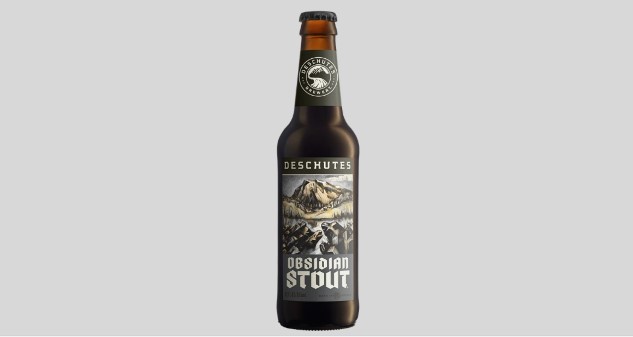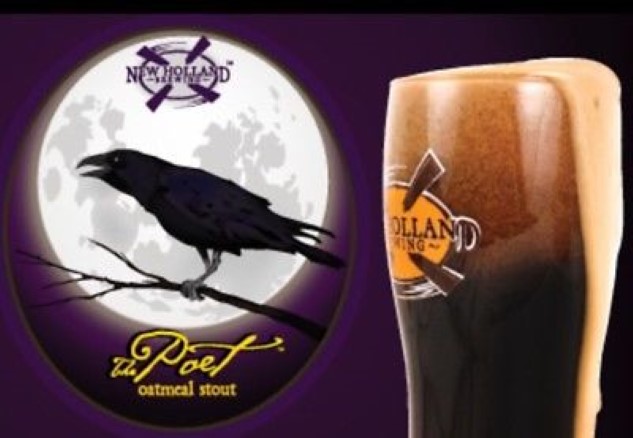
If you’re a beer geek who just looked at the headline above and thought “Wait, there’s plenty of stouts available!”, allow me to explain.
We’re not talking about imperial stouts here. We’re also not talking about adjunct stouts, filled to the brim with coffee, vanilla bean, lactose or fruit.
We’re here to talk about stout, plain and simple. And the truth of the style is this: “Regular” stout has become a curiously endangered beer style over the course of the last decade. In fact, it’s all too easy to overlook just how rare “standard” stouts have become. From their heyday as a staple beer style at seemingly every major craft brewery, to relative obscurity, there seem to be myriad factors behind the precipitous decline of non-adjunct stout.
Those Roasty Days of Old
When I first became fascinated by craft beer, it was only 2006 or so, but that seems like a lifetime ago in industry terms. The “rules,” as they pertained to what kinds of beer styles a craft brewery would be expected to produce, were very different—almost unrecognizable, compared with today.
The well-established breweries of the day, many of which remain today’s biggest regional craft brewers, tended to have fairly similar beer portfolios. A year-round, non-adjunct dark ale of some kind? That was a given. Many breweries pursued this particular market with porters (or brown ales). Some did it with year-round stouts. Still others did it with both at the same time, which forced them to draw a distinction between the two—never an easy assignment, given the lack of any true, universal consensus on what you can and can’t use in a porter or stout. What they largely settled on was this:
1. “American stouts” are typically a bit stronger in ABV than American robust porters.
2. American stouts have a more assertive roast character than American robust porters, and may be a bit more dry.
3. American stouts have a bit more hop presence than American robust porters.
And for a while, if a brewery produced something labeled as “stout,” that’s more or less what you could expect to receive. It was what the average consumer pictured, when reading the word “stout” on a menu. But then, the conception of stout began to change.
 Out of Bounds, another classic example of “American stout” from Avery Brewing Co.
Out of Bounds, another classic example of “American stout” from Avery Brewing Co.
It seemed to start with the popularization of adjunct stouts. Historical, mildly modified styles such as oatmeal stout and milk stout segued into coffee stouts, or spiced stouts, or fruited stouts. Simultaneously, the “extreme beer” phase bloomed in the mid-to-late 2000s, led by the surging popularity of barrel-aged imperial stouts attempting to replicate the growing cults of beers like Goose Island Bourbon County Stout, Three Floyds Dark Lord or Founders KBS. And as time passed, what was “extreme” became commonplace, as it always does. A mere handful of years after putting a stout in a bourbon or rum barrel seemed like a novel idea, you now have to add half a dozen adjuncts to that same beer to capture any kind of beer geek buzz. We’re now in the era of pastry stout—of cookie stout, of breakfast cereal stout, of milkshake stout. Take your pick as to nomenclature, but remember to bring your insulin.
And as those beers came into vogue, they managed to do something interesting—they usurped the term “stout” in the beer landscape. It’s the reality of selling beer in 2018/2019: If you say “stout” these days, the first thing to come to a consumer’s mind isn’t a 6 percent ABV, roasty, dry, mildly hoppy dark ale. It’s a 10-14 percent ABV, likely barrel-aged beer with vanilla bean, cinnamon, marshmallows and coconut in it.
And breweries know this. If they want a year-round, standard strength dark beer, they need only to look at the consumer’s modern conception of “stout” to decide not to make their year-rounder one of those old-school, American-style stouts. Two beers with the name “stout” on the menu? Why confuse the consumer when you can just make a porter instead? The stout label, we can save for our 12 percent, BBA beer with vanilla, liquid smoke and crumbled Oreos, right?
And that’s fine—a lot of us like those crazy pastry stouts. This piece isn’t meant to disparage their existence. They’re fun treats, and exciting bottles to share with a crowd. But they’re also not the kind of thing you can drink on a regular basis, nor the kind of thing one should be drinking every night. Eventually, you start longing for the subtlety and balance of plain ‘ole stout.
A Style in Hiding
The evidence of “standard” stout’s decline is everywhere, once you start to look. Just run some of these figures through your head that I culled from a cursory examination of Beer Advocate.
— There are only 17 entries for “American stout” on BA with more than 1,000 reviews.
— There are 16 more entries for “oatmeal stout” with more than 1,000 reviews.
— There are 19 entries for “milk stout” with more than 1,000 reviews.
Meanwhile, switch over to imperial stout styles, and the story becomes very different.
— There are 94 entries for “American imperial stout” on BA with more than 1,000 reviews.
— There are 41 more entries under “Russian imperial stout” with more than 1,000 reviews.
When all is said and done, that equals just 52 entries within all spheres of “standard stout” with more than 1,000 reviews, to 135 within the “imperial” categories. And guess what? Even among those 52, quite a few are simply mislabeled imperial stouts with ABVs of 8 percent or more, that have managed to squirrel their way into the other categories—meaning that ultimately, the number of true “standard” stouts with more than 1,000 reviews is even lower.
I include these statistics to give a frame of reference as to where the priorities of beer drinkers seem to reside. After all, the beers we care the most about are the ones we take the time to record and report. Even with the advantage of “standard” stouts having been around far longer than the current craze for high-gravity pastry stouts, sites like Beer Advocate or Untappd are inundated with interest and coverage of the latter. It’s no wonder that people now think of the high-gravity, sugar-laden stuff when they hear the word “stout.”
As a result, the year-round stouts that remain on the market tend to be the most battle-hardened of brands. They’re the beers that have built (relatively) small, loyal followings—enough to justify keeping them on in the taproom instead of a fourth or fifth IPA.
This phenomenon is perhaps best illustrated by the stout of a single, beloved national craft brewery: Sierra Nevada. Once upon a time, both Sierra Nevada Porter and Sierra Nevada Stout could be found all over the U.S., sold side by side in most package stores that carried the brand.
 Remember this beer?
Remember this beer?
Now ask yourself: When’s the last time you saw Sierra Nevada Stout for sale at a package store or beer bar? In Paste’s home state of Georgia, neither Stout nor Porter are available at all within 100 miles of Atlanta—they’ve both been pulled out entirely, presumably because they didn’t sell enough here to justify shipping them in. The same story is true in plenty of other places, and yet Sierra Nevada still refers to both Porter and Stout as year-round releases on their website. I have to question whether that’s really accurate, given the tiny scale in which they’re now being brewed.
Case in point: I’ve visited the Sierra Nevada Taproom in Fletcher, NC, twice in the last year. On neither visit was Porter or Stout pouring from the main taproom. Porter, I eventually found during one visit pouring from a single trailer tap out on the patio, but you’d never know it was there unless you specifically went looking for it. Stout? The only place I was able to find Sierra Nevada Stout, at the brewery’s own taproom in November, was in the form of a jar of stout mustard in the gift shop. In case you were wondering? It’s delicious, but how can you eat it without getting a little wistful? It’s a reminder that even in the brewery’s most visible public space, non-imperial, non-adjunct stout is hardly a priority, even it’s it’s listed as a “year rounder.”
 Unfortunately, my jar of mustard is almost empty now.
Unfortunately, my jar of mustard is almost empty now.
For the likes of Sierra Nevada, “American stout” just became an untenable proposition to promote as a national brand. The beer still exists, technically. I’m sure it shows up in the taproom from time to time, probably most often in the winter. But it feels like the world has left the style behind, and quite frankly, I miss it.
Talking Stout with Pro Brewers
In the course of writing this piece, I reached out to a number of breweries that still brew standard strength, non-adjunct (or “low-adjunct”) stouts, to discuss a number of topics: The history of the stout style; the current domination of that style by adjuncts; the difficulties inherent in selling non-adjunct stouts; where “American stout” fits in the modern craft beer landscape, and more. Here are some of the highlights of those conversations.
Deschutes Brewing Co. — Brewmaster of Operations, Brian Faivre
Deschutes is one of only a few major national breweries that, like Sierra Nevada, can make the claim to manufacture BOTH a year-round, non-adjunct porter and a year-round American stout. Unlike Sierra, though, one of those beers is actually core to the brewery’s lineup and identity—in this case, it’s Black Butte Porter, which has been both a symbolic and volume flagship for Deschutes at various points in the brewery’s existence. The year-round stout (Obsidian Stout), on the other hand, flies considerably more under the radar, but it’s an excellent beer.

Speaking with Faivre, the Deschutes brewmaster described how Obsidian Stout is still brewed exclusively on the company’s original, smaller brewhouse, partially as a way of training brewers. He speculates that Deschutes has been able to defy the odds and continue offering both a year-round porter and year-round stout because of the reputation and goodwill that Black Butte has brought to the company over the years—“it probably helps give Obsidian some legitimate credibility.”
“This time of year, when it starts to get cold, I personally probably drink more Obsidian than anything else,” Faivre said. “Compared with Black Butte it’s the roast and black malt that make it stand out more—it has richer, more intense coffee and cocoa notes. Drinking one last night, I was thinking about how much the head retention really stands out as well. It just seems so much more intense flavor-wise to me than Black Butte—it makes you feel good when it’s cold outside. That’s what sets it apart.”
Speaking to the decline of beers in the mold of Obsidian Stout, Faivre simply called their increasing rarity “kind of tragic.” He’s glad to still have a standard strength stout around that can be consumed in quantity, rather than meted out as a special occasion.
“I think we all love something like The Abyss, our imperial stout, but it’s not something you can drink every day,” he said. “Last night I met up with some friends, and it was great to just have a couple pints of Obsidian. It’s not a beer that is killing it today in terms of sales, but it’s one of my favorites.”
Highland Brewing Co. — R&D Brewer Trace Redmond
Highland is also one of the few major regional breweries that produces both a year-round porter and a year-round stout, and once again in Highland’s case it’s the porter (Highland Oatmeal Porter) that is the significantly bigger beer in terms of volume and importance. Also similar is the fact that I’d personally prefer to drink the brewery’s very tasty stout, Black Mocha—which, despite its name, isn’t actually brewed with either coffee or chocolate. Also unique is the fact that Highland chooses to brew their porter (5.9 percent ABV) to a stronger level than their stout, which is a mere 5 percent. Clearly, this is an “American stout” fit for session drinking—something R&D brewer Trace Redmond highlights.
“Black Mocha Stout is special because it doesn’t have any gimmicks – any flavors that you’re getting from that beer come from the ingredients, and people get excited about that,” he said. “It also is a sessionable stout at 5%. Most breweries are growing their ABV’s in this category, so there are not many sub 6% stouts in the US.”

As for the growth of adjunct stouts, and the way they’ve superseded more classical versions of the style, Redmond said the following:
“We have beers in this segment that have adjuncts that we’re excited about. It’s about finding balance with both. Many consumers are becoming more conscious of what is in products they’re purchasing across the board, including beer. Appreciating a beer without adjuncts or extra ingredients will appeal to that consumer.”
New Holland Brewing Co. — Owner/Founder Brett VanderKamp
New Holland doesn’t have as many “core” or year-round beers as many breweries do, but they’ve stuck by their classic oatmeal stout, The Poet, through thick and thin. They certainly have shown no hesitance in having a well-known standard strength stout, alongside an even better-known barrel-aged stout (Dragon’s Milk). And indeed, as owner VanderKamp acknowledges, New Holland has explored all kinds of unique iterations and flavorings for Dragon’s Milk, so it’s not as if they’re exactly taking a stand against the “pastry stout” movement.
“Yes, we have witnessed the Stout landscape continue to get more and more entrants that appear to be more about the additives than making a great quality beer,” he said. “That said, we love to be creative with stout beers by creating complementary flavors for our Dragon’s Milk Stout. Our most recent is a variant with Orange and Chocolate added. The fact is that dark-roasted malt beers that are low hopped create a wonderful backdrop to add unique and complimentary flavors!”

But at the same time, even as the brewery has experimented via Dragon’s Milk, their standard strength stout has remained a dependable, unchanging standby—what VanderKamp refers to as “a steady workhorse,” with “a loyal group of fans that keep its volume very stable.” But at the same time, the owner is irked when he sees adjunct stouts that push the envelope past a certain point of sense or decency.
“I do think some of the imperial-ization has gotten out of hand,” he said. “Just adding more of something (hops or alcohol) does not make it better or more interesting. In fact, I believe it is really sort of a ‘one-trick pony’ that’s born out of laziness.”
VanderKamp goes on to hope that in the future, the balance might shift back to a greater appreciation for subtlety.
“Currently, balance appears to be dead, but like all things, ultimately the pendulum still swings back to a more balanced state,” he said.
American Stout: Where Is He Now?
Ultimately, the thing holding back a revival of “American stout” most firmly is likely the fact that it’s simply not a beer style with any kind of significant buzz or “cool” factor attached to it. Its fall from grace is, in its own way, emblematic of the wider shift in the kinds of beers we see as defining the “craft beer” industry as a whole.
At an earlier time in its history, “craft beer” styles tended to define themselves oppositionally. These were beers you were drinking instead of the obvious alternative, which were bland, watery American adjunct lagers. They were big, bold, acquired tastes. This was as true for the roasty bitterness of an American stout as it was for the hop-derived bitterness of American IPAs. They were tastes and sensations you essentially worked to acquire.
Today, the craft beer world is a different space, and numerous styles have changed accordingly, in much the same way. IPAs became fruitier, then hazier, then outright sweeter. Stouts became more flavored, then bigger, then outright sweeter. Our craving for sugar, for approachability, left its mark in both spheres. These were no longer tastes that people would describe as “acquired.” They were tastes aimed at capturing the widest possible demographic of sugar-loving drinkers, but they also had the unfortunate effect of decreasing access to those roasty, hoppy, more subtle stouts of old.
That’s where we are now. Will the meaning of “stout,” in the collective consciousness, ever revert back to what it once was? Or will we all be drinking 20 percent ABV, barrel-aged liquid brownie batter a few years from now?
I know which one I’d prefer.
Jim Vorel is a Paste staff writer and resident beer guru. You can follow him on Twitter for more drink writing.